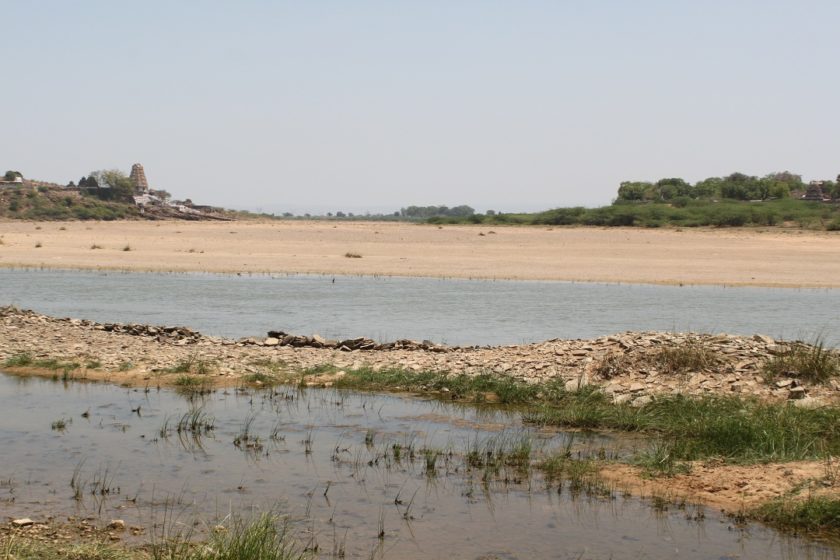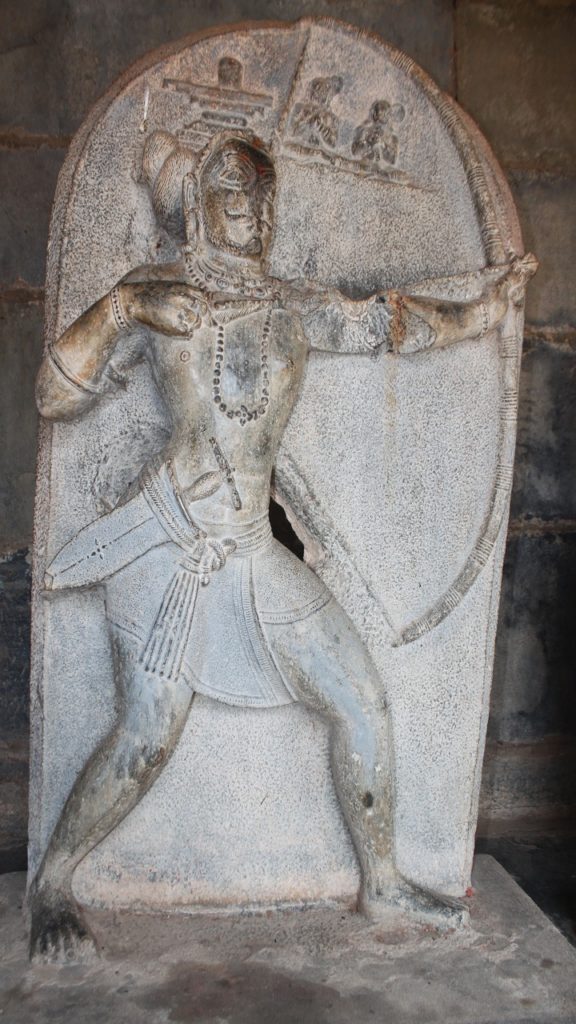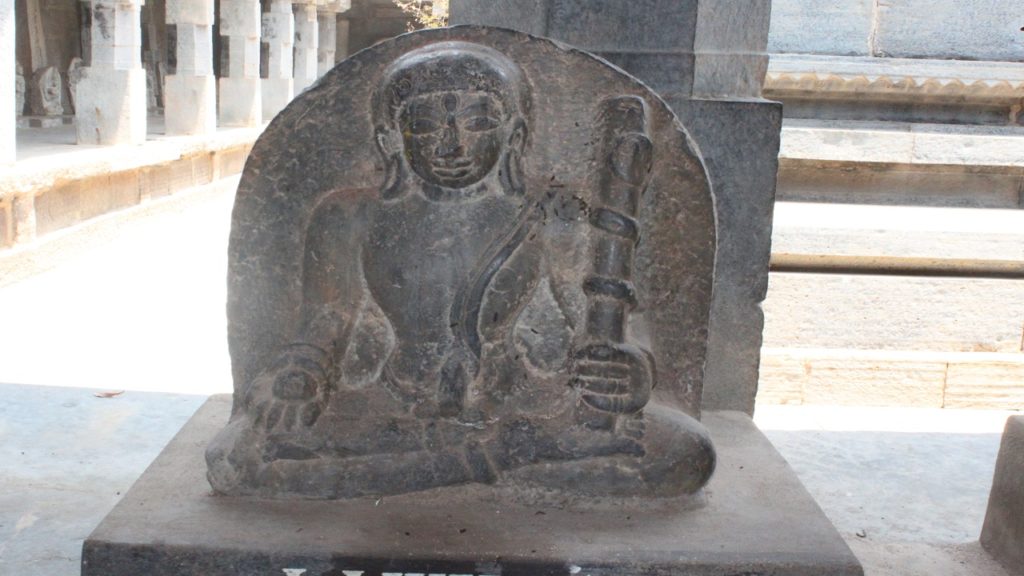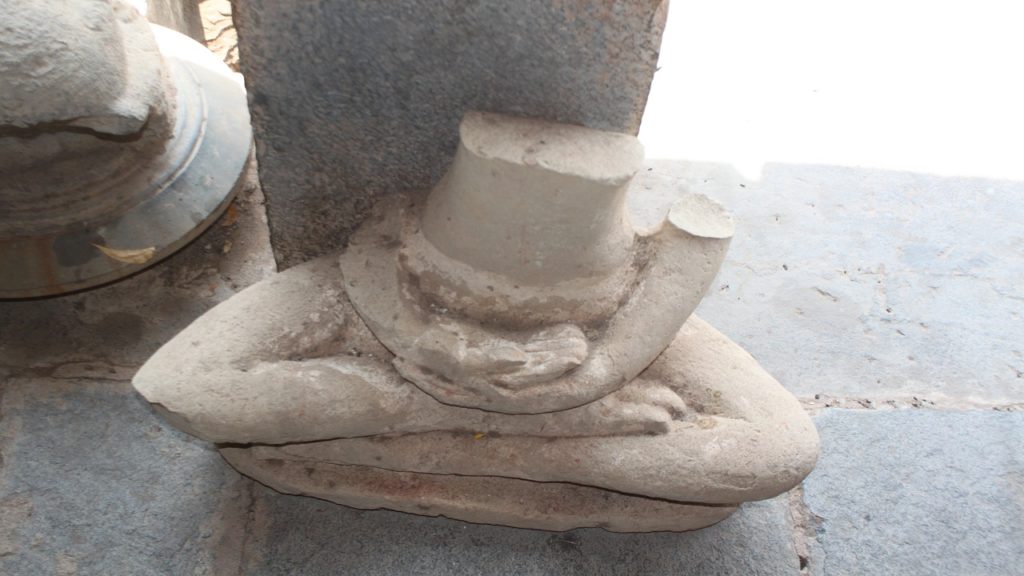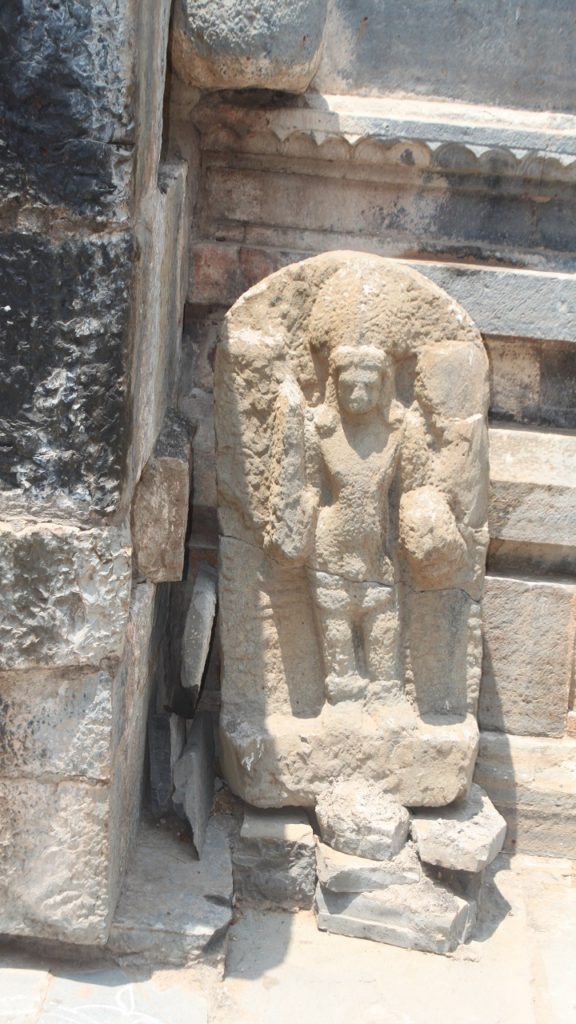Andhra Pradesh
List of Masjids in Andhra Pradesh which was built by destroying Hindu temples
LIST OF HINDU TEMPLES DESTROYED AND CONVERTED TO MOSQUES IN ANDHRA PRADESH BY MUSLIMS
We give below, state-wise and district-wise, the particulars of Muslim monuments which stand on the sites and/or have been built with the materials of Hindu temples, and which we wish to recall as witnesses to the role of Islam as a religion and the character of Muslim rule in medieval India. The list is the result of a preliminary survey. Many more Muslim monuments await examination. Local traditions which have so far been ignored or neglected, have to be tapped on a large scale.
We have tried our best to be exact in respect of locations, names and dates of the monuments mentioned. Even so, some mistakes and confusions may have remained. It is not unoften that different sources provide different dates and names for the same monument. Many Muslim saints are known by several names, which creates confusion in identifying their mazars or dargahs. Some districts have been renamed or newly, created and a place which was earlier under one district may have been included in another. We shall be grateful to readers who point out these mistakes so that they can be corrected in our major study. This is only a brief summary.
Sita Ram Goel
It should be kept in mind that the list below doesn’t include all the temples destroyed by Muslims and which were converted to mosques. The below is the list of mosques and Dargahs where evidences exists of having been made after destroying the temples at these locations. In many mosques, Muslim rulers were able to eradicate all signs of temples, and hence not given in below list.
Anyone is free to visit the below list of mosques and see the remnants and materials of Hindu temples used in their construction. Archaeological Survey of India should conduct an excavation of below mosques to find out more about the ancient temples in these locations and possible mass graves around the mosque sites.
I. ADILABAD DISTRICT
Mahur
1. Masjid in the Fort on the hill. Temple site.
II. ANANTPUR DISTRICT
Gooty
2. Gateway to the Hill Fort. Temple materials used.
Kadiri
3. Jami Masjid. Temple site.
Konakondla
4. Masjid in the bazar. Temple materials used.
Penukonda
5. Fort. Temple materials used.
6. Masjid in the Fort. Converted Temple.
7. Sher Khans Masjid (1546) Converted Temple.
8. Dargah of Babayya. Converted Azvara Temple.
9. Jami Masjid (1664-65). Temple site.
10. Dargah of Shah Fakbrud-din (1293-94). Temple site.
Tadpatri
11. Jami Masjid (1695-96). Temple site.
12. Idgah completed in 1725-26. Temple site.
Thummala
13. Masjid (1674-75). Temple site.
III. CUDDAPAH DISTRICT
Cuddapah
14. Bhap Sahib-ki-Masjid (1692). Temple site.
15. Idgah (1717-18). Temple site.
16. Bahadur Khan-ki-Masjid (1722-23). Temple site.
17. Dargah of Shah Aminud-Din Gesu Daraz (1736-37). Temple site.
Duvvuru
18. Masjid. Temple site.
Gandikot
19. Jami Masjid (1690-91). Temple site.
Gangapuru
20. Masjid. Temple site.
Gundlakunta
21. Dastgiri Dargah. Temple site.
Gurrumkonda
22. Fort and several other Muslim buildings. Temple materials used.
Jammalmaduguu
23. Jami Masjid (1794-95). Temple site.
Jangalapalle
24. Dargah of Dastgir Swami. Converted Jangam temple.
Siddhavatam
25. Qutb Shahi Masjid (restored in 1808). Temple materials used.
26. Jami Masjid (1701). Temple materials used.
27. Dargah of Bismillah Khan Qadiri. Temple materials used.
28. Fort and Gateways. Temple materials used.
29. Chowk-ki-Masjid. Temple site.
Vutukuru
30. Masjid at Naligoto. Temple site.
31. Masjid at Puttumiyyapeta. Temple site.
IV. EAST GODAVARI DISTRICT
Bikkavolu
32. Masjid. Temple materials used.
V. GUNTUR DISTRICT
Nizampatnam
33. Dargah of Shah Haidri (1609). Temple site
Vinukonda
34. Jami Masjid (1640-41). Temple site.
VI. HYDERABAD DISTRICT
Chikalgoda
35. Masjid (1610). Temple site.
Dargah
36. Dargah of Shah Wali (1601-02). Temple site.
Golconda
37. Jami Masjid on Bala Hissar. Temple site.
38. Taramati Masjid. Temple site.
Hyderabad
39. Dargah of Shah Musa Qadiri. Temple site.
40. Masjid on the Pirulkonda Hill (1690). Temple site.
41. Toli Masjid (1671). Temple materials used.
42. Dargah of Mian Mishk (d. 1680). Temple site.
43. Dargah of Mumin Chup in Aliyabad (1322-23). Temple site.
44. Haji Kamal-ki-Masjid (1657). Temple site.
45. Begum Masjid (1593). Temple site.
46. Dargah of Islam Khan Naqshbandi. Temple site.
47. Dargah of Shah Daud (1369-70). Temple site.
48. Jami Masjid (1597). Temple site.
Maisaram
49. Masjid built by Aurangzeb from materials of 200 temples demolished after the fall of Golconda.
Secunderabad
50. Qadam Rasul. Temple site.
Sheikhpet
51. Shaikh-ki-Masjid (1633-34). Temple site.
52. SaraiwAli Masjid (1678-79). Temple site.
VII. KARIMNAGAR DISTRICT
Dharampuri
53. Masjid (1693). Trikuta Temple site.
Elangdal
54. Mansur Khan-ki-Masjid (1525). Temple site.
55. Alamgiri Masjid (1696). Temple site.
Kalesyaram
56. Alamgiri Masjid. Temple site.
Sonipet
57. Alamgiri Masjid. Temple site.
Vemalvada
58. Mazar of a Muslim saint. Temple site.
VIII. KRISHNA DISTRICT
Gudimetta
59. Masjid in the Fort, Temple materials used.
Guduru
60. Jami Masjid (1497). Temple materials used.
Gundur
61. Jami Masjid. Converted temple.
Koindapall
62. Masjid built in 1482 on the site of a temple after Muhammad Shah BahmanI had slaughtered the Brahmin priests on the advice of Mahmud Gawan, the great Bahmani Prime Minister, who exhorted the sultan to become a Ghazi by means of this pious performance.
63. Mazar of Shah Abdul Razzaq. Temple site.
Kondavidu
64. Masjid (1337). Temple materials used.
65. Dargah of Barandaula. Temple materials used.
66. Qadam Sharif of Adam. Converted temple.
Machhlipatnam
67. Jami Masjid. Temple site.
68. Idgah. Temple site.
Nandigram
69. Jami Masjid. Temple site.
Pedana
70. Iama-il-ki-Masjid. Temple site.
Rajkonda
71. Masjid (1484). Temple site.
Tengda
72. Masjid. Temple site.
Turkpalem
73. Dargah of Ghalib Shahid. Temple site.
Vadpaili
74. Masjid near Narsimhaswamin Temple. Temple materials used.
Vijaywada
75. Jami Masjid. Temple site.
IX. KURNOOL DISTRICT
Adoni
76. Jami Masjid (1668-69). Materials of several temples used.
77. Masjid on the Hill. Temple materials used.
78. Fort (1676-77). Temple materials used.
Cumbum
79. Jami Masjid (1649). Temple site.
80. Gachinala Masjid (1729-30). Temple site.
Havli
81. Jami Masjid. Temple materials used.
Karimuddula
82. Dargah. Akkadevi Temple materials used.
Kottakot
83. Jami Masjid (1501). Temple site.
Kurnool
84. Pir Sahib-ka-Gumbad (1637-38). Temple site.
85. Jami Masjid (1667). Temple site.
86. Lal Masjid (1738-39). Temple site.
Pasupala
87. Kalan Masjid. Temple site.
Sanjanmala
88. Masjid. Temple sites.
Siddheswaram
89. Ashurkhana. Temple materials used.
Yadavalli
90. Mazar and Masjid. Temple sites.
Zuhrapur
91. Dargah of Qadir Shah Bukhari. Temple site.
X. MAHBUBNAGAR DISTRICT
Alampur
92. Qala-ki-Masjid. Temple materials used.
Jatprole
93. Dargah of Sayyid Shah Darwish. Temple materials used.
Kodangal
94. Dargah of Hazrat Nizamud-Din. Temple site.
95. Jami Masjid. Temple site.
Kundurg
96. Jami Masjid (1470-71). Temple site.
Pargi
Jami Masjid (1460). Temple site.
Somasila
Dargah of Kamalud-Din Baba (1642-43) Temple site.
XI. MEDAK DISTRICT
Andol
97. Old Masjid. Temple site.
Komatur
98. Old Masjid. Temple site.
Medak
99. Masjid near Mubarak Mahal (1641). Vishnu Temple site.
100. Fort, Temple materials used.
Palat
101. Masjid. Temple site.
Patancheru
102. Jami Masjid. Temple materials used.
103. Dargah of Shykh Ibrahim known as Makhdumji (1583). Temple site.
104. Ashrufkhana. Temple site.
105. Fort (1698). Temple materials used.
XII. NALGONDA DISTRICT
Devarkonda
106. Qutb Shahi Masjid. Temple materials used.
107. Dargah of Sharifud-Din (1579). Temple site.
108. Dargah of Qadir Shah Wali (1591). Temple site.
Ghazinagar
109. Masjid (1576-77). Temple site.
Nalgonda
110. Garhi Masjid. Temple site.
111. Dargah of Shah Latif. Temple site.
112. Qutb Shahi Masjid (Renovated in 1897). Temple site.
Pangal
113. Alamgiri Masjid. Temple site.
XIII. NELLORE DISTRICT
Kandukuru
114. Four Masjids. Temple sites.
Nellore
115. Dargah named Dargamitta. Akkasalisvara Temple materials used.
Podile
116. Dargah. Temple site.
Udayagiri
117. Jami Masjid (1642-43). Temple materials used.
118. Chhoti Masjid (1650-51). Temple materials used.
119. Fort. Temple materials used.
XIV. NIZAMBAD DISTRICT
Balkonda
120. Patthar-ki-Masjid. Temple site.
121. Idgah. Temple site.
Bodhan
122. Deval Masjid. Converted Jain temple.
123. Patthar-ki-Masjid. Temple site.
124. Alamgiri Masjid (1654-55). Temple site.
Dudki
125. Ashrufkhana. Temple materials used.
Fathullapur
126. Muaskari Masjid (1605-06). Temple site.
XV. OSMANABAD DISTRICT
Ausa
127. Jami Masjid (1680-81). Temple site.
XVI. RANGAREDDY DISTRICT
Maheshwar
128. Masjid (1687). Madanna Pandits Temple site.
XVII. SRIKAKULAM DISTRICT
Icchapuram
129. Several Masjids. Temple sites.
Kalingapatnam
130. Dargah of Sayyid Muhammad Madni Awliya (1619-20). Temple materials used.
Srikakulam
131. Jami Masjid (1641- 42). Temple site.
132. Dargah of Bande Shah Wali (1641- 42). Temple site.
133. Atharwali Masjid (1671-72). Temple site.
134. Dargah of Burhanud-Din Awliya. Temple site.
XVIII. VISHAKHAPATNAM DISTRICT
Jayanagaram
135. Dargah. Temple site.
Vishakhapatnam
136. Dargah of Shah Madni. Temple site.
XIX. WARANGAL DISTRICT
Zafargarh
137. Jami Masjid. Temple site.
XX. WEST GODAVARI DISTRICT
Eluru
138. Fort. Temple materials used.
139. Sawai Masjid. Converted temple.
140. Qazi’s House. Somesvara Temple materials used.
Nidavolu
141. Masjid. Mahadeva Temple materials used.
Rajamundri
142. Jami Masjid (1324). Converted Venugopalaswamin Temple.
EVIDENCE IS AVAILABLE THAT IN ANDHRA PRADESH THE ABOVE MENTIONED MOSQUES AND DARGAHS WERE CONSTRUCTED BY DESTROYING HINDU TEMPLES. BUT IN MANY OTHER CASES MUSLIMS SUCCEEDED IN REMOVING ALL TRACES OF TEMPLES FROM THE MOSQUES. IN SUCH CASES ONLY AN EXCAVATION BY ASI WILL REVEAL THE DESTROYED TEMPLES.
WHILE MUSLIMS ASK FOR REBUILDING THE ILLEGAL MOSQUE IN AYODHYA, WHY SHOULD NOT HINDUS DEMAND THE RECONSTRUCTION OF THE DESTROYED TEMPLES IN INDIA?

